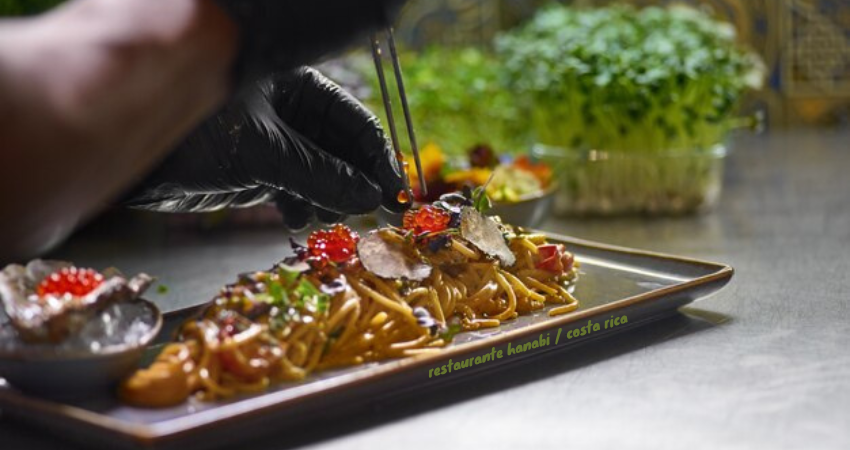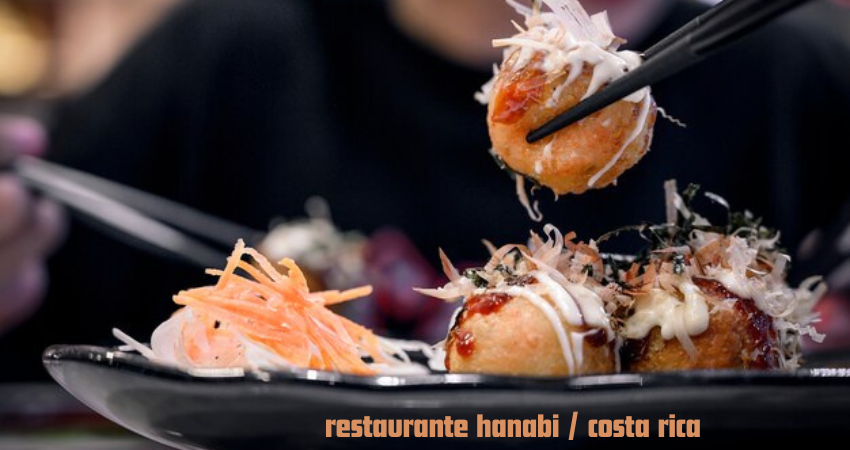Nestled in the lush embrace of Costa Rica’s natural splendor, restaurante hanabi / costa rica stands not just as a place to eat, but as a realm where art, culture, and flavor collide. This is not merely a restaurant—Hanabi is a living poem, a tribute to heritage and a beacon of culinary innovation. To understand the history of Hanabi is to dive deep into a tale of dreams, resilience, and the delicate threads that connect the art of food with the soul of a nation.
The Genesis of a Dream: Hanabi’s Humble Beginnings
It began quietly, like a seedling reaching for the light. Restaurante hanabi / costa rica was born out of a dream—one that mixed the deep traditions of Japanese cuisine with Costa Rica’s vibrant flavors and welcoming spirit. In the early 1990s, Costa Rica was awakening to international culinary influences, and the founders of Hanabi, a Japanese-Costa Rican couple, saw an opportunity to create something extraordinary.
Their dream wasn’t just about food; it was about connection. The name “Hanabi,” which means “fireworks” in Japanese, reflects this philosophy. Fireworks are fleeting yet unforgettable—a burst of light and emotion. That’s exactly what the founders envisioned for every meal served at their tables.
The first Hanabi was a modest establishment in San José, Costa Rica’s bustling capital. The founders themselves would greet guests at the door, sharing not only their dishes but their stories. The initial menu was a fusion of authentic Japanese sushi and Costa Rican ingredients like tropical fruits and fresh-caught fish. Each plate was an experiment, a celebration, and a risk.

The Rise of Japanese Cuisine in Costa Rica
In the 1990s, Japanese cuisine was still a novelty for most Costa Ricans. The culinary landscape was dominated by traditional dishes like gallo pinto, casados, and tropical seafood. While Costa Rica’s rich bounty of fresh fish was world-renowned, the idea of eating raw fish—as in sushi—was met with skepticism.
Hanabi faced an uphill battle, educating its diners about the nuances of Japanese cuisine. The founders began hosting small workshops and tasting events, offering glimpses into the artistry behind sushi-making. With time, Hanabi became a pioneer of gastronomic storytelling, blending Costa Rican warmth with Japanese precision.
Blending Cultures: A Symphony of Flavors
At its heart, Hanabi’s history is a story of fusion—not just of cuisines, but of cultures. Costa Rica, with its lush rainforests and rich biodiversity, provided the perfect palette for Japanese cuisine to evolve.
The rice for sushi rolls? Grown locally, yet prepared with an authentic Japanese technique.
The fish? Fresh from Costa Rica’s Pacific and Caribbean coasts, harmonizing with the simplicity of Japanese dishes.
Tropical fruits like mangoes and pineapples found their way into sushi rolls and desserts, adding a Costa Rican twist to traditional recipes.
It was at Hanabi where diners first encountered sushi rolls filled with tender ceviche, or desserts inspired by the Costa Rican staple tres leches, infused with matcha green tea. This harmonious blend earned Hanabi a reputation not only for culinary innovation but also for honoring the cultural identities it represented.
The Challenges of Growth
Like any dream worth pursuing, Hanabi’s journey was not without challenges. The late 1990s and early 2000s were marked by a wave of globalization that transformed Costa Rica’s dining scene. As sushi and Japanese cuisine became trendy, competition grew. Chains and fast-food sushi spots began to spring up, offering a diluted version of the culinary experience Hanabi championed.
To preserve its authenticity, Hanabi doubled down on quality and storytelling. Every dish served carried a tale—of the rice farmer, the fisherman, the chef perfecting his craft. The restaurant remained a family-run establishment, prioritizing personal touches over mass appeal.
A Place for Memories: Hanabi as a Cultural Hub
By the mid-2000s, restaurante hanabi / costa rica was more than a restaurant—it was a cultural hub. The owners hosted events that brought people together.
Sakura Festivals: During Costa Rica’s summer months, Hanabi celebrated the Japanese cherry blossom tradition by hosting sakura-themed evenings, complete with floral decorations and seasonal dishes.
Sushi Workshops: Generations of Costa Ricans learned how to roll sushi at Hanabi. These workshops weren’t just about technique; they were about community.
Art Exhibitions: Local artists would display their works at Hanabi, creating a space where culinary and visual arts coexisted beautifully.
Each event reinforced Hanabi’s commitment to being more than just a place to eat. It became a place to celebrate life’s fleeting, beautiful moments—like fireworks.
A Legacy of Sustainability
Long before sustainability became a buzzword, restaurante hanabi / costa rica championed it as a way of life. The founders believed that true culinary art could not exist without respect for the environment. From day one, they sought out local, sustainable ingredients.
Farm-to-Table Philosophy: Hanabi’s produce comes from nearby farms, where organic practices ensure the highest quality.
Zero Waste: The restaurant has adopted practices to minimize food waste, using leftover rice to create unique dishes or donating excess food to local charities.
Sustainable Seafood: By partnering with responsible fishermen, Hanabi ensures that its seafood offerings are as eco-conscious as they are delicious.
This ethos resonates deeply in Costa Rica, a country known for its environmental leadership. Hanabi’s approach aligns seamlessly with Costa Rica’s values, making it a pioneer in eco-gastronomy.
The Evolution of the Menu: A Canvas of Creativity
Today, Hanabi’s menu is a masterpiece that spans generations and geographies. Signature dishes like the Volcano Roll—a sushi roll inspired by Costa Rica’s famous volcanoes, topped with spicy tuna and creamy avocado—sit alongside classics like tempura and sashimi.
For those seeking a Costa Rican twist, there’s tuna ceviche nigiri, combining the bold citrus flavors of Costa Rican ceviche with the elegance of Japanese nigiri. And for dessert? Matcha ice cream drizzled with Costa Rican honey, a sweet union of two worlds.
Every season brings new surprises, as the chefs at Hanabi experiment with ingredients and techniques while staying true to their roots.
Surviving the Pandemic: A Testament to Resilience
The COVID-19 pandemic tested the mettle of businesses worldwide, and Hanabi was no exception. Yet, even in the darkest days, the restaurant remained a beacon of hope.
The team pivoted to online orders and delivery services, offering meticulously packed sushi boxes that brought the Hanabi experience into people’s homes. Social media became a lifeline, allowing Hanabi to share recipes, cooking tips, and messages of encouragement with its loyal customers.
Through it all, Hanabi remained committed to its principles of quality, authenticity, and community.

The Future of Hanabi: Carrying the Torch Forward
As Hanabi looks to the future, it does so with the same passion and vision that defined its beginnings. Plans are underway to open a second location, potentially in Costa Rica’s burgeoning beach towns, where the rhythm of the ocean could provide a new backdrop for Hanabi’s culinary storytelling.
The founders’ children, now grown, have also joined the family business, ensuring that Hanabi’s legacy continues. They bring fresh perspectives, integrating modern techniques and trends while honoring the traditions that make Hanabi special.
Why Hanabi Matters: More Than a Restaurant
Restaurante hanabi / costa rica history is more than a timeline—it’s a love story. It’s about the love of food, the love of culture, and the love of bringing people together. It’s about creating moments that linger in the heart long after the meal is over.
For Costa Rica, Hanabi represents the beauty of fusion—not just in cuisine but in humanity. It’s proof that when cultures come together with respect and creativity, they can create something greater than the sum of their parts.
FAQs About Restaurante Hanabi in Costa Rica
1. What does “Hanabi” mean?
“Hanabi” means “fireworks” in Japanese, symbolizing fleeting beauty and unforgettable moments—values reflected in the restaurant’s philosophy.
2. What makes Hanabi’s menu unique?
Hanabi blends traditional Japanese techniques with Costa Rican ingredients, creating a fusion of flavors that is both innovative and authentic.
3. Where is Restaurante Hanabi located?
Currently, Hanabi operates in San José, Costa Rica. Plans for expansion to beach towns are underway.
4. Does Hanabi offer vegetarian or vegan options?
Yes, Hanabi features a variety of vegetarian and vegan dishes, including vegetable sushi rolls and tofu-based creations.
5. How does Hanabi promote sustainability?
Hanabi uses locally sourced, organic ingredients and practices zero waste. Their seafood is sustainably sourced to protect marine ecosystems.
6. Can I host events at Hanabi?
Yes, Hanabi offers private dining and event hosting, perfect for special occasions like birthdays, anniversaries, and corporate gatherings.


